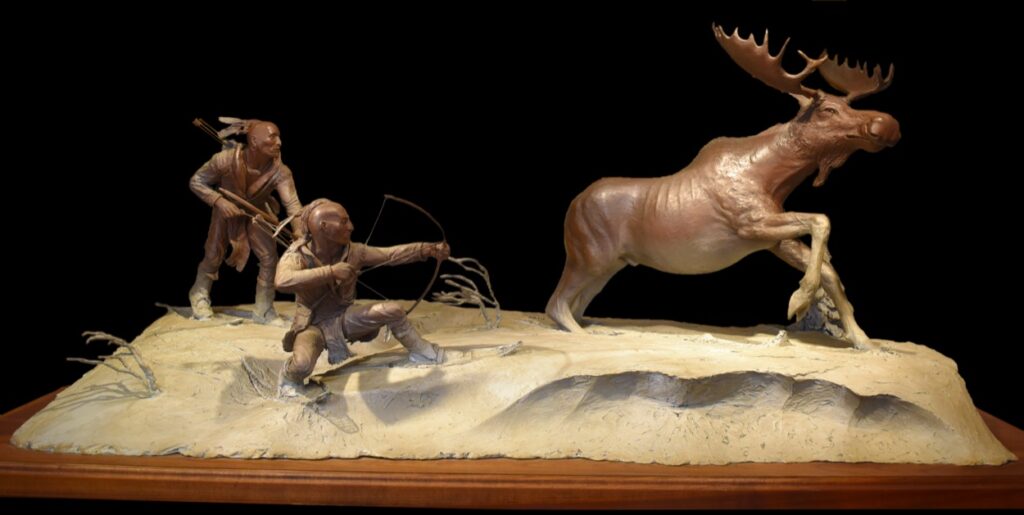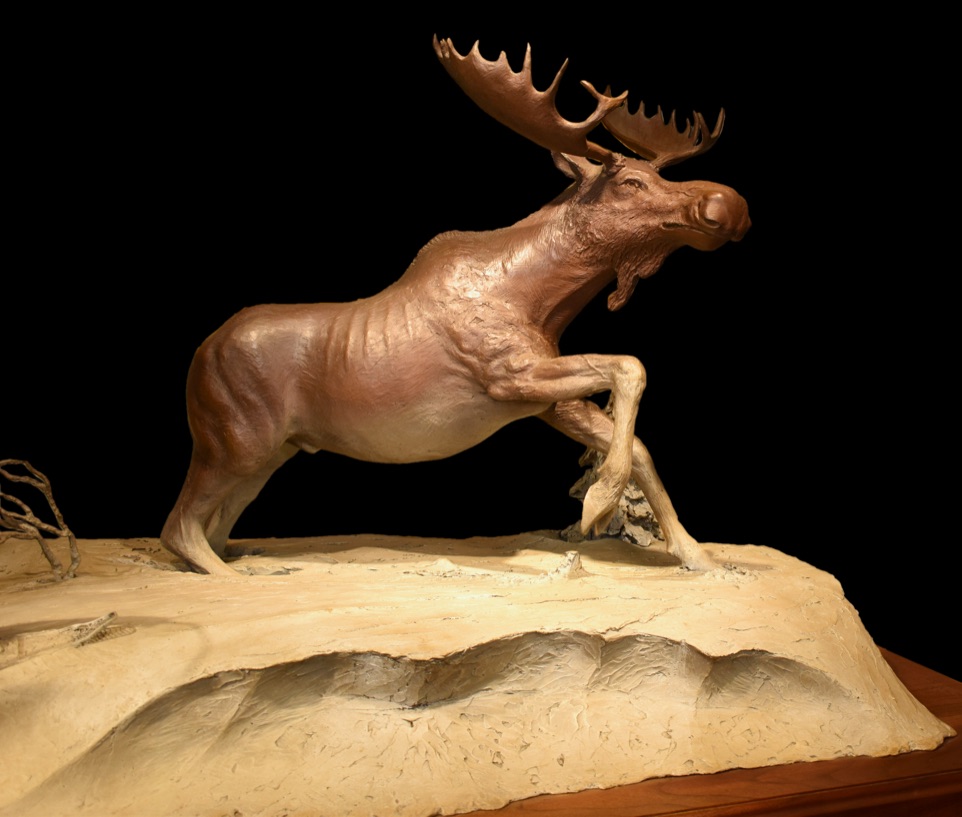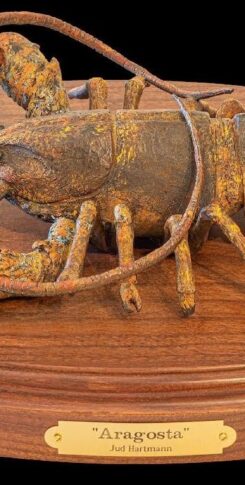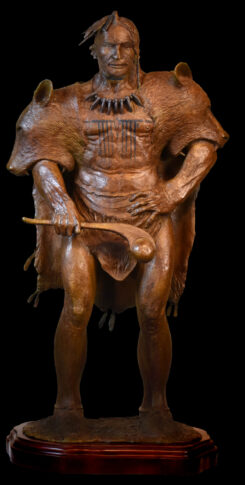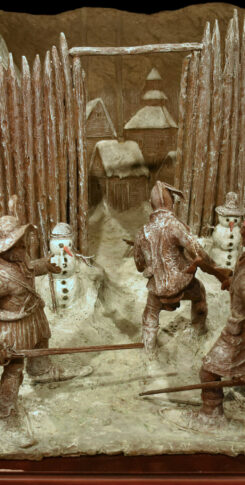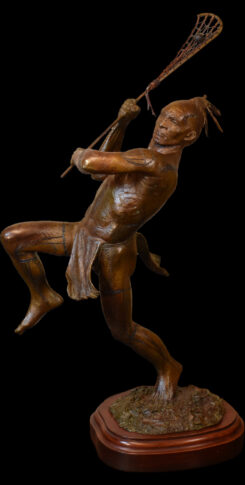Bronze edition: 20 | Length: 66″ | Height: 30″
An Abenaki Moose Hunt
Two Abenaki hunters emerge from the forest and surprise a bull moose charging across a clearing through the drifted snow. The winter is the best time to hunt the moose since they are slowed by the deep snow, while northern native people, like Abenaki, can skim along the surface wearing light snow shoes fashioned of steamed ash and dried sinew.
“Mong-Soa” or twig eater (Moz in athe Abenaki language and other variations from which our word Moose is derived), was an important food source for those northern hunters during the lean months of the winter. A large bull, such as this one, who will shortly shed his antlers, might weigh 1200 pounds and stand 7′ tall at the shoulder with a rack spanning 6 feet. Besides the meat, much of which was smoked for later consumption, the hide, much thinker and more durable than deerskin, was used to fashion tall winter moccasins or mukluks. As with the hunting of all game, the moose hunt was conducted with utmost respect and humility. A ceremony of thanks was given to appease the spirit of the departed animal, thus helping to ensure success in future hunts.
“The moose is larger than a horse, and is one of the deer-kind, every year changing his horns; the color is a dark brown, the hair coarse. He has a mane like a horse and a dulap like a cow, a very large head and a short tail. During the summer he frequents bogs and swamps; and in the winter the north sides of hills and mountains where the sun will not melt the snow. Their common pace of traveling is a trott, but when hunted are very swift.”
Maj. Robert Rogers, “A Concise account of North America”, 1765
“There are in this country, three kinds of Deare of whch there are great-plenty, and these are very useful. First, therefore I will speak of the Elke, which the salvages call a Mose. It is a very large Deare, with a very faire head and a broad palme, like the palme of a fallow Deares horne, but much bigger and is 6 foot wide betwen the tipps… Hee is of the bigness of a big horse.
“There have bin seene of them that has bin 18 hands highe … strong and large in body and ong legged … Their hides are by the salvages converted into very good leather and dressed as white as milk. Of this leather, the salvages make the best shoes… These (Moose) are found very frequent in northerne parts of New England and their flesh is very god foode and much better than our Deare of England.”
Thomas Morton, “New English Cannan”, 1637

